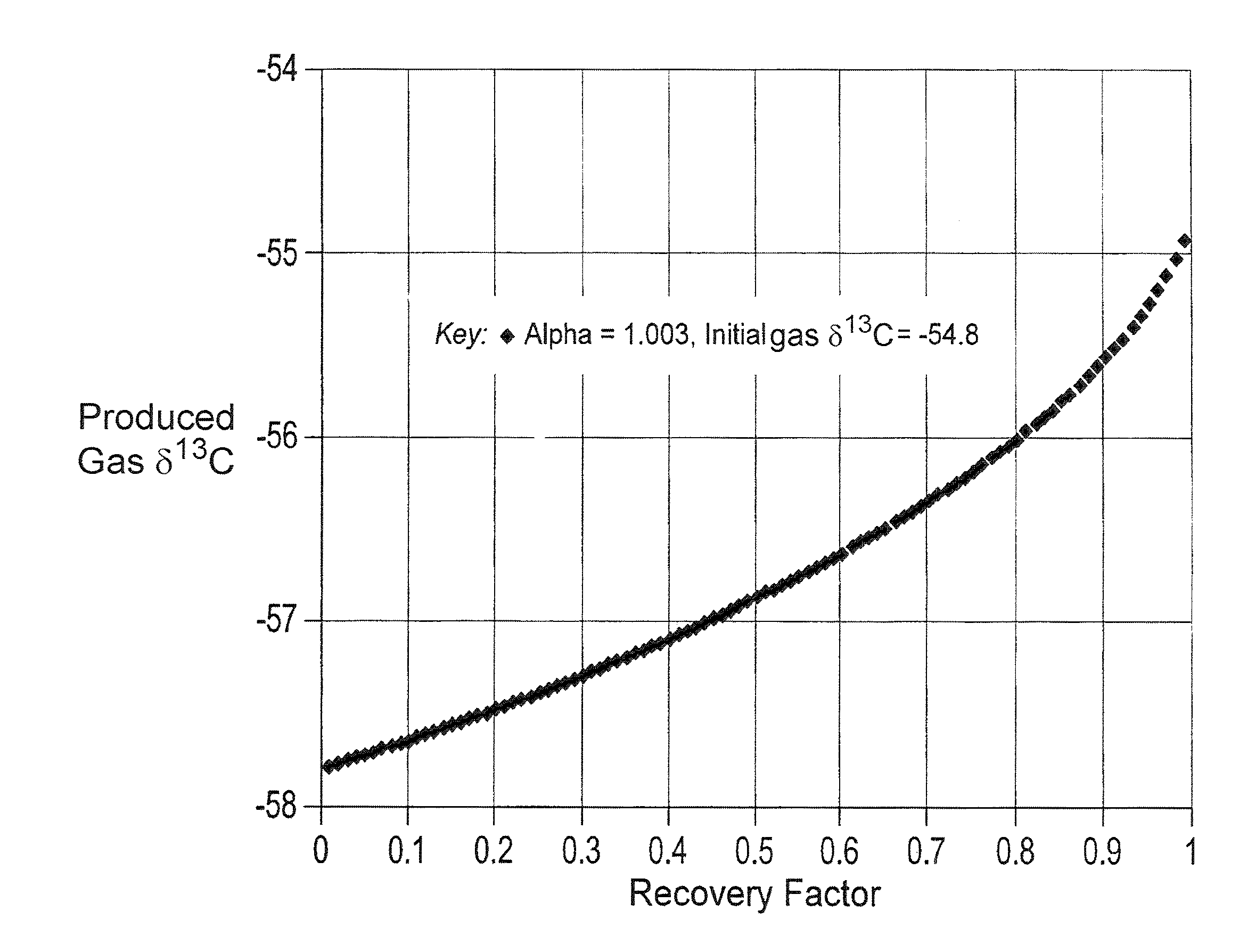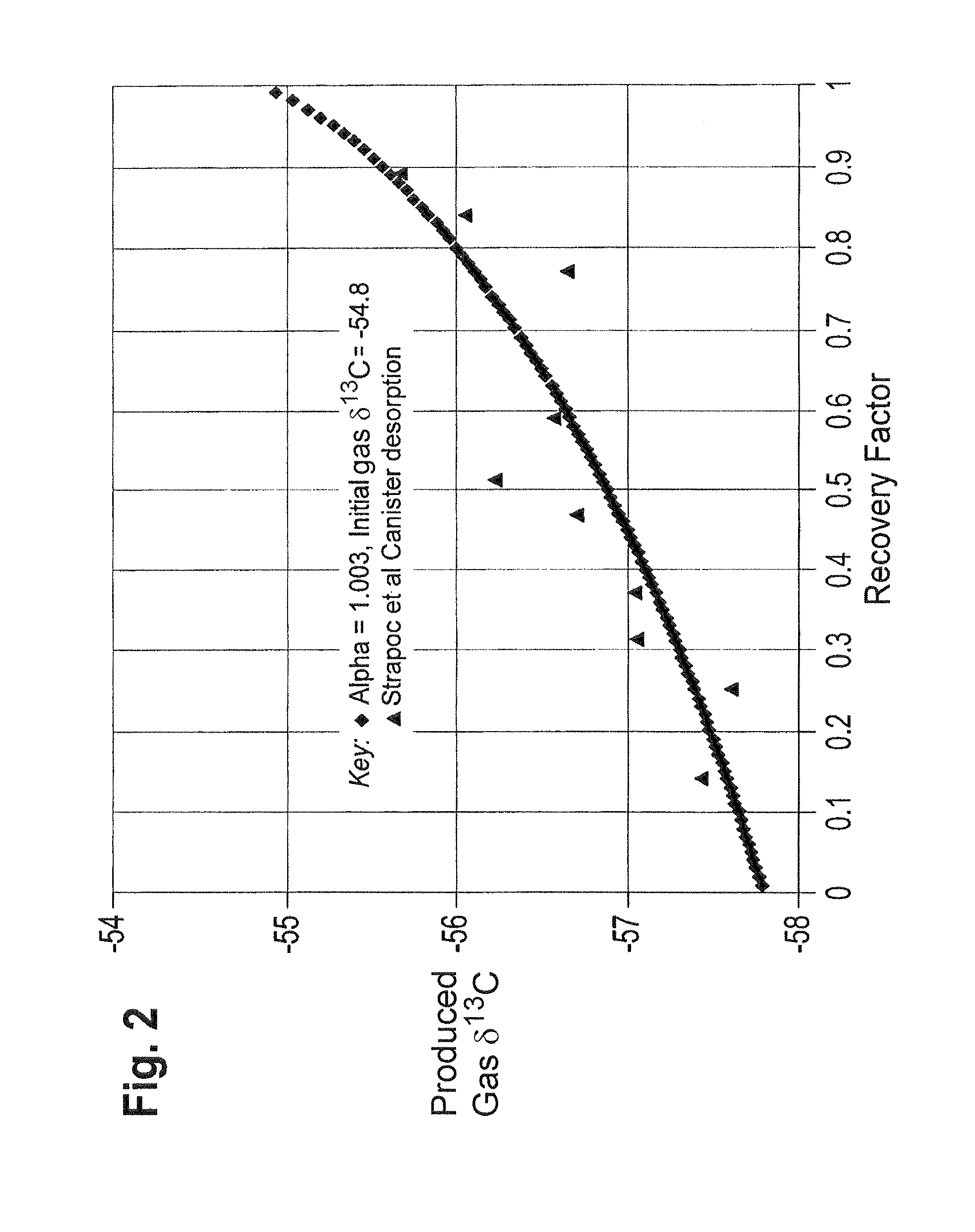Geochemical surveillance of gas production from tight gas fields
a gas field and tight technology, applied in survey, borehole/well accessories, construction, etc., to achieve the effects of improving reservoir management, improving the ability to determine, and improving the gas recovery
- Summary
- Abstract
- Description
- Claims
- Application Information
AI Technical Summary
Benefits of technology
Problems solved by technology
Method used
Image
Examples
example 2
[0045]Table 2 below shows further data reported by Strapoc et al for on-line isotopic analyses of gas desorbed from coal core V-3 / 1 and for off-line isotopic analyses of gas desorbed from coal core II-3 / 2
[0046]
TABLE 2Fraction of gasdesorbed up to dateSampleDay of desorptionof samplingδ13C CH4 (‰)V-3 / 1 (on-line)10.14−57.6050.37−57.38150.59−56.94360.77−56.55500.84−56.35II-3 / 2 (off-line)50.40−56.86570.89−56.02950.98−55.55
[0047]This data is also shown in FIG. 3 fitted to a modeled curve obtained by using an initial δ13C value of −55.4‰ and an α value of 1.0025 in the Rayleigh Distillation model of the present invention.
[0048]It was found that the published experimental data of Strapoc et al gave support for the Rayleigh distillation model of the present invention and an empirical α value of about 1.003. It was also found that the model curves derived from the Rayleigh distillation model of the present invention could be used to predict recovery factor from methane δ13C of produced gas.
PUM
 Login to View More
Login to View More Abstract
Description
Claims
Application Information
 Login to View More
Login to View More - R&D
- Intellectual Property
- Life Sciences
- Materials
- Tech Scout
- Unparalleled Data Quality
- Higher Quality Content
- 60% Fewer Hallucinations
Browse by: Latest US Patents, China's latest patents, Technical Efficacy Thesaurus, Application Domain, Technology Topic, Popular Technical Reports.
© 2025 PatSnap. All rights reserved.Legal|Privacy policy|Modern Slavery Act Transparency Statement|Sitemap|About US| Contact US: help@patsnap.com



